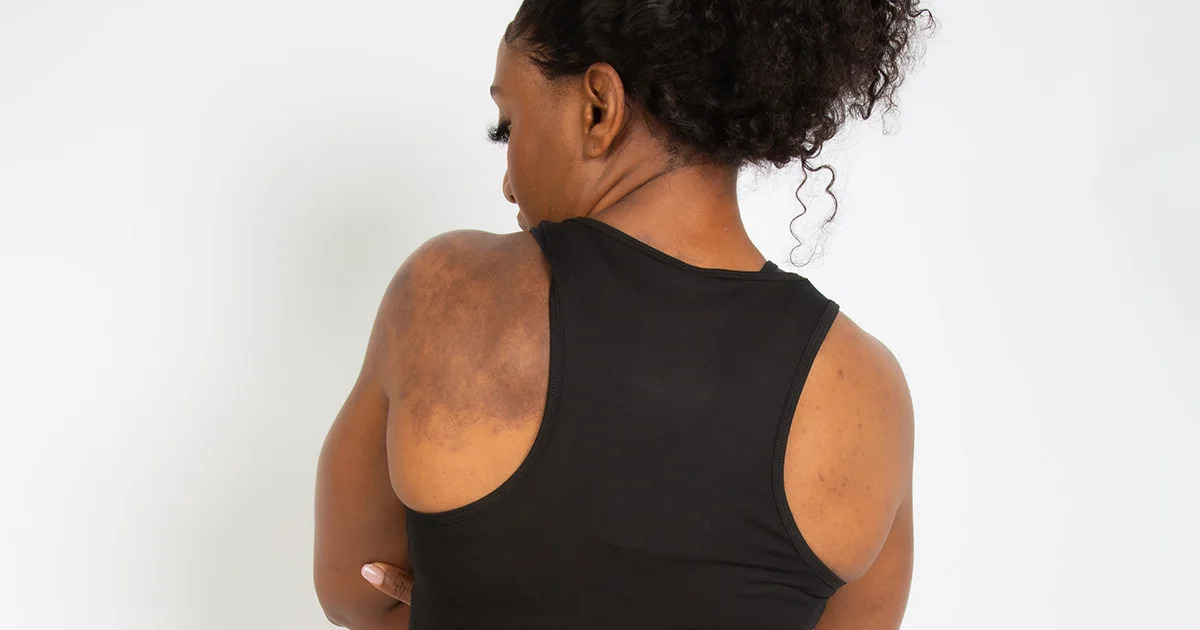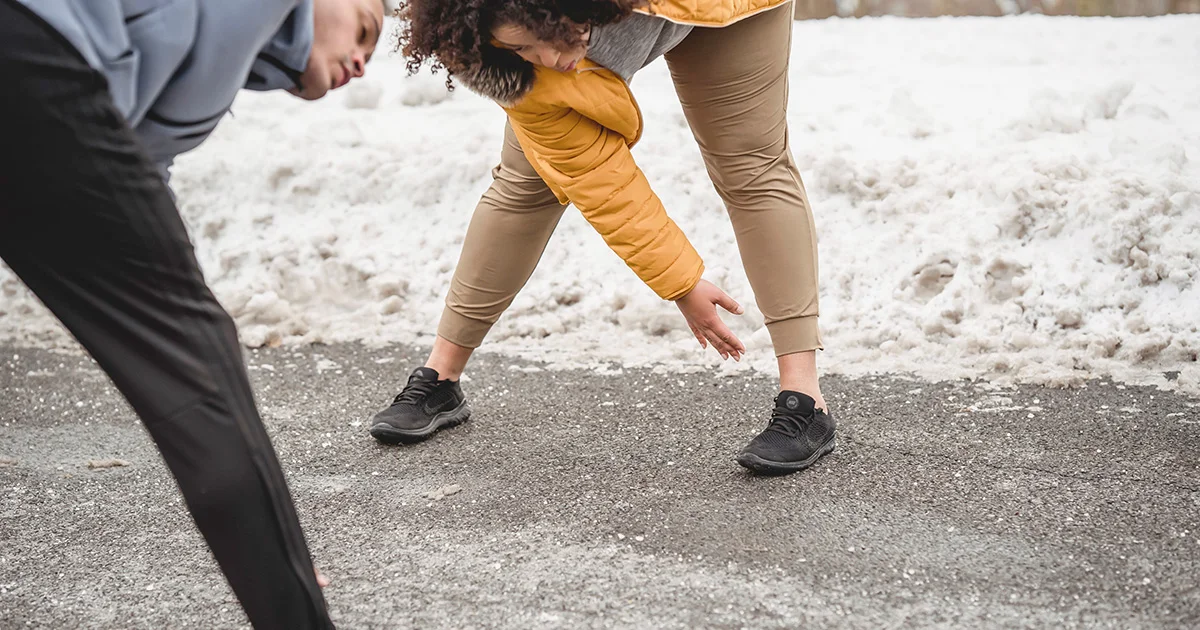Here's what we'll cover
Here's what we'll cover
The benefits of swimming are vast. It can be used as a form of relaxation—like engaging in a casual swim in your hotel pool; a form of rehabilitation—like partaking in aquatic therapy following an ACL reconstruction (Buckthorpe, 2019); or as a form of exercise—like hitting your local community watering hole for a few early-morning laps.
The benefits of swimming go beyond simply being a fun activity. They range from improved heart health and brain function to increased muscle strength, and calorie burn (Oja, 2017; Shoemaker, 2019; Sidebotham, 2018).
Here are eight research-backed health benefits of swimming that further contribute to its popularity.
Benefits of swimming
1. Improved cardiovascular system
Like running and cycling, swimming is aerobic exercise. It engages the heart, lungs, arteries, and blood vessels and offers the following benefits:
Reduced risk of dying from heart disease: A 2017 study found that swimming regularly is linked to a 41% lower risk of death from heart disease and a 28% lower risk of early death from any cause (Oja, 2017).
Healthier arteries: When arteries are rigid, the heart has to work harder to circulate blood, and blood pressure increases. Regular swimming was shown to reduce arterial stiffness in both younger and older swimmers in a matter of weeks ( Nishiwaka, 2017; Zhang, 2020).
Reduced blood pressure: Swimming reduces blood pressure. In one study, young, overweight men achieved lower blood pressure after swimming for 30 minutes three times a week for eight weeks (Yuan, 2016). A 12-week study showed similar blood pressure improvements in a group of otherwise healthy adults over age 50 who had hypertension (Nualnim, 2012).
Improved lung function: Swimmers are known to have better lungs than non-swimmers. In a review of dozens of studies, improved oxygen intake was shown across all ages (Lahart, 2018). Compared to runners, one study showed that swimmers had greater lung capacity and breath control. Some of this may be genetic, but early and continued training is thought to play a role (Sable, 2012; Rochat, 2021).
Note: Pool chlorine can irritate the lungs and affect asthma. It’s best to check with a healthcare provider before starting a swimming routine if you suffer from breathing conditions (Fisk, 2015).
2. Brain benefits
The study that followed the eight-week swimming program of young, overweight men found that the blood supply to the brain via the carotid arteries was improved. The carotid arteries, found in the neck, carry blood to the brain (Yuan, 2016).
Various studies link regular aerobic exercise with improved cognitive function (Mandolesi, 2018). In one small study, researchers found breaststroke swimming for just 20-minutes at moderate intensity improved certain brain skills (Shoemaker, 2019).
3. Full-body workout
Another one of the benefits of swimming is that it offers a full-body workout that engages and helps strengthen all the major muscle groups. Some muscles play a major role in moving the body forward in the water, such as the triceps brachii, latissimus dorsi, quadriceps, and hamstring muscles. If you’re doing the breaststroke, it’s a great workout for the pectoralis major. Other muscles also actively propel or complement and stabilize the body (Martens, 2015). The bottom line is that by the time you step out of the water, you’ve moved a lot of muscles, making tasks a bit easier.
4. Metabolism boost
As you’re getting a cardio workout, swimming for an hour burns about 500 calories depending on your speed, current body weight, and gender (Sidebotham, 2018). There are also other metabolic changes occurring when you swim regularly. Intermittent, high-intensity swimming three times a week helped balance blood glucose and increase insulin sensitivity in a study of middle-aged women with mild hypertension (Connolly, 2016).
Another study shows an hour of swimming three times a week for 12 weeks among a group of middle-aged women led to improvements in blood lipid levels. After the program, the researchers found that the women who swam had an increase in flexibility and endurance, an increase in HDL (good) cholesterol, and a decrease in body fat, total cholesterol, and triglycerides (Lee, 2015).
However, while a metabolism boost is one of the benefits of swimming, it is not linked to the same amount of weight loss as other aerobic activities such as running (Lahart, 2018).
This may be because swimming can increase appetite. If you’ve felt famished after a swim, you’re not alone. One study shows that swimming often suppresses appetite during exercise but then leads to an increase in hunger after the swim. Researchers believe the body temperature drop that often accompanies swimming causes this. The body reacts by wanting more calories to burn. To counter these hunger pangs, it may help to have snacks and water on hand (King, 2011).
5. Easy on the joints
The buoyancy of water offers a low-impact swimming workout that’s gentle on the joints and has a reduced risk of injury. Swimming can be a great physical activity for all ages and fitness levels. It involves the entire body and you can tailor it to offer a good workout for those with special needs. It allows for longer exercise sessions since it alleviates pressure on the joints (Bergamin, 2013).
Aqua therapy in warm water has gained popularity as a way to help seniors get a low-intensity workout to prevent falls and injuries on land. It also offers an option for rehabilitation after injuries (Turner, 2018; Kim, 2013).
6. Pain relief
Pain relief is one of the benefits of swimming that many take to the water for. This can be in the form of swimming or aquatic exercises that are often used to treat musculoskeletal conditions (Shi, 2018). One study of women managing obesity showed water exercises helped reduce lower back pain. The women could use flotation devices to walk, jog and kick using the water for buoyancy (Abadi, 2019).
Another study that compared swimming and cycling found that both reduced the joint pain and stiffness of osteoarthritis. The middle-aged and older adults who were part of that study also noticed increased muscle strength and functioning (Alkatan, 2016).
7. Better sleep
Exercise can make you sleep better. In one review, researchers found older adults who took part in moderate-intensity exercise programs three times a week for at least 12 weeks saw the most improvements in sleep (Vanderlinden, 2020). In another study, an aerobic program that included swimming improved sleep in older adults with chronic insomnia (Reid, 2011).
Sleep disorders can have many causes and take a toll on physical and mental health. If you’re having sleep problems, it’s best to talk with a healthcare provider to rule out medical conditions and find the best solutions. Healthcare providers often suggest exercise for those with insomnia.
8. Reduced stress, improved mood
Finally, we can't ignore the mental benefits of swimming. Many people report lower anxiety and improved quality of life after exercising, partly because it improves their sleep (Passos, 2012). Beyond that, exercise can change the chemistry of the body. It can trigger the release of neurochemicals that counter stress and improve feelings of wellbeing (Mandolesi, 2018).
A 2021 study showed endocannabinoids, molecules made by the body, are increased during exercise and are associated with feelings of euphoria, reduced anxiety, and improvement in mood (Meyer, 2019; Siebers, 2021).
How to start swimming
Maybe you have participated in recreational swimming at pools or beaches but have yet to try swimming as an aerobic exercise. If you want all of the benefits of swimming listed above and are looking to add swimming to your exercise routine, here are a few steps to take:
Know the strokes: If you don’t know how to swim, it’s best to take a class. You can start by looking for classes at local pools or fitness clubs. The American Red Cross offers a national list of options. Even if you know how to swim, knowing how to properly perform basic strokes like the freestyle or backstroke can make a swim workout more effective (American Red Cross-a, n.d.).
Start slowly: As you start swimming, keep track of your times. According to the 2018 Physical Activities Guidelines for Americans, healthy adults should aim for at least 150 minutes of moderate-intensity aerobic exercise or 75 minutes of vigorous-intensity aerobic activity a week. But don’t rush it if you’re not active. The advice is to increase physical activity gradually (HHS, 2018).
Combine exercises for best results: Swimming is easy on the joints and bones, which can have drawbacks. Weight-bearing exercises such as walking, jogging, or resistance training with weights are helpful to build bone density. There is evidence swimming does have bone benefits, but likely not enough. So, it’s good to combine swimming with weight-bearing activities (Su, 2020).
Swimming safety tips
No matter the activity, safety comes first. When it comes to swimming, it’s important to keep these safety tips in mind (American Red Cross-a, n.d.):
Keep an eye on children: Never leave children unattended near water. Keep pool gates locked and consider a pool alarm that sends an alert if a child falls into the water (Blazovic, 2020).
Avoid eating too much: There is a long-running belief that you may drown if you eat before swimming. The International Life Saving Federation (ILS) looked into this claim and found there is not an increased risk of drowning. However, the group cites an increased risk of stomach problems such as nausea and abdominal pain (ILS, 2013).
Avoid alcohol/drugs: Alcohol or recreational drug use while swimming or supervising children near water increases the risk of drowning and other accidents (Blazovic, 2020).
Drink water: Like other aerobics, the body needs water to avoid dehydration.
Open water considerations: Open water can be an exhilarating experience. Both freshwater and ocean water bodies can be wonderful ways to connect with nature and get a workout in. But dangers do lurk. To avoid dangerous swimming areas and conditions, it’s important to follow beach or waterfront swimming rules and advisories (American Red Cross-b, n.d.).
Buddy-up: If there’s not a lifeguard on duty, it’s best to swim with a friend or let someone know where you’ll be (CDC, 2021).
When done safely, swimming is an excellent form of exercise. As this list of the benefits of swimming shows, it’s known to boost the quality of life, improve overall health, and benefit people of all ages. Still, before engaging in a new exercise routine, it’s important to speak with your healthcare provider to discuss any risks associated with the activity.
DISCLAIMER
If you have any medical questions or concerns, please talk to your healthcare provider. The articles on Health Guide are underpinned by peer-reviewed research and information drawn from medical societies and governmental agencies. However, they are not a substitute for professional medical advice, diagnosis, or treatment.
Alkatan, M., Baker, J. R., Machin, D. R., Park, W., Akkari, A. S., Pasha, E. P., & Tanaka, H. (2016). Improved function and reduced pain after swimming and cycling training in patients with osteoarthritis. The Journal of Rheumatology , 43 (3), 666–672. Doi: 10.3899/jrheum.151110. Retrieved from https://www.jrheum.org/content/43/3/666.short
American Red Cross-a. (n.d.). Swimming Safety Tips . Retrieved September 15, 2021 from https://www.redcross.org/get-help/how-to-prepare-for-emergencies/types-of-emergencies/water-safety/swim-safety.html
American Red Cross-b. (n.d.). Swimming Safely in Lakes, Rivers, & Streams . Retrieved September 15, 2021 from https://www.redcross.org/get-help/how-to-prepare-for-emergencies/types-of-emergencies/water-safety/lake-river-safety.html
Bergamin, M., Ermolao, A., Tolomio, S., Berton, Sergi, & Zaccaria. (2013). Water- versus land-based exercise in elderly subjects: Effects on physical performance and body composition. Clinical Interventions in Aging , 1109. doi: 10.2147/cia.s44198. Retrieved from https://www.ncbi.nlm.nih.gov/pmc/articles/PMC3762608/
Blazovic, S. (2021, July 31). Pool Safety. [Updated Jul 31, 2021]. In: StatPearls [Internet]. Retrieved from https://www.ncbi.nlm.nih.gov/books/NBK534235/
Buckthorpe, M., Pirotti, E., Della Villa, F. (2019). Benefits and use of aquatic therapy during rehabilitation after ACL reconstruction - a clinical commentary. International Journal of Sports Physical Therapy, 14 (6), 978-993. Retrieved from https://www.ncbi.nlm.nih.gov/pmc/articles/PMC6878863/
Connolly, L. J., Nordsborg, N. B., Nyberg, M., Weihe, P., Krustrup, P., & Mohr, M. (2016). Low-volume high-intensity swim training is superior to high-volume low-intensity training in relation to insulin sensitivity and glucose control in inactive middle-aged women. European Journal of Applied Physiology, 116 , 1889-1897. doi: 10.1007/s00421-016-3441-8. Retrieved from https://pubmed.ncbi.nlm.nih.gov/27473445/
International Life Saving Federation (ILSF). (2014). Eating Before Swimming: Medical Position Statement - MPS-18 . Retrieved September 15, 2021 from https://www.ilsf.org/wp-content/uploads/2018/11/MPS-18-2014-Eating-before-Swimming.pdf .
Fisk, M. Z., Steigerwald, M. D., Smoliga, J. M., & Rundell, K. W. (2010). Asthma in swimmers: A review of the current literature. The Physician and Sportsmedicine , 38 (4), 28–34. doi: 10.3810/psm.2010.12.1822. Retrieved from https://pubmed.ncbi.nlm.nih.gov/21150139/
Kim, S. B., & O’sullivan, D. M. (2013). Effects of aqua aerobic therapy exercise for older adults on muscular strength, agility and balance to prevent falling during gait. Journal of Physical Therapy Science , 25 (8), 923–927. doi: 10.1589/jpts.25.923. Retrieved from https://www.ncbi.nlm.nih.gov/pmc/articles/PMC3820233/
King, J. A., Wasse, L. K., & Stensel, D. J. (2011). The acute effects of swimming on appetite, food intake, and plasma acylated ghrelin. Journal of Obesity , 2011 , 1–8. doi: 10.1155/2011/351628. Retrieved from https://www.ncbi.nlm.nih.gov/pmc/articles/PMC2952805/
Lahart, I. M., & Metsios, G. S. (2017). Chronic physiological effects of swim training interventions in non-elite swimmers: A systematic review and meta-analysis. Sports Medicine , 48 (2), 337–359. doi: 10.1007/s40279-017-0805-0. Retrieved from https://pubmed.ncbi.nlm.nih.gov/29086218/
Lee, B.-A., & Oh, D.-J. (2015). Effect of regular swimming exercise on the physical composition, strength, and blood lipid of middle-aged women. Journal of Exercise Rehabilitation , 11 (5), 266–271. doi: 10.12965/jer.150242. Retrieved from https://www.ncbi.nlm.nih.gov/pmc/articles/PMC4625655/
Mandolesi, L., Polverino, A., Montuori, S., Foti, F., Ferraioli, G., Sorrentino, P., & Sorrentino, G. (2018). Effects of physical exercise on cognitive functioning and wellbeing: Biological and psychological benefits. Frontiers in Psychology , 9 . doi: 10.3389/fpsyg.2018.00509. Retrieved from https://www.ncbi.nlm.nih.gov/pmc/articles/PMC5934999/
Martens, J., Figueiredo, P., & Daly, D. (2015). Electromyography in the four competitive swimming strokes: A systematic review. Journal of Electromyography and Kinesiology , 25 (2), 273–291. doi: 10.1016/j.jelekin.2014.12.003. Retrieved from https://pubmed.ncbi.nlm.nih.gov/25556010/
Meyer,Jacob D., Crombie, Keven M., Cook, Dane B., Hillard, Cecilia J., & Koltyn, Keli F. (2019). Serum endocannabinoid and mood changes after exercise in major depressive disorder. Medicine & Science in Sports & Exercise , 51 (9), 1909–1917. doi: 10.1249/mss.0000000000002006. Retrieved from https://www.ncbi.nlm.nih.gov/pmc/articles/PMC6727944/
Nishiwaki, M., Takahara, K., & Matsumoto, N. (2016). Arterial stiffness in young adult swimmers. European Journal of Applied Physiology , 117 (1), 131–138. doi: 10.1007/s00421-016-3505-9. Retrieved from https://pubmed.ncbi.nlm.nih.gov/27873019/
Nualnim, N., Parkhurst, K., Dhindsa, M., Tarumi, T., Vavrek, J., & Tanaka, H. (2012). Effects of Swimming training on blood pressure and VASCULAR function in adults >50 years of age. The American Journal of Cardiology , 109 (7), 1005–1010. doi: 10.1016/j.amjcard.2011.11.029. Retrieved from https://pubmed.ncbi.nlm.nih.gov/22244035/
Oja, P., Kelly, P., Pedisic, Z., Titze, S., Bauman, A., Foster, C., et al. (2017). Associations of specific types of sports and exercise with all-cause and cardiovascular-disease mortality: A cohort study of 80 306 British adults. British Journal of Sports Medicine, 51 (10), 812-817. doi: 10.1136/bjsports-2016-096822. Retrieved from https://pubmed.ncbi.nlm.nih.gov/27895075/
Passos, G. S., Poyares, D. L., Santana, M. G., Tufik, S., & Mello, M. T. (2012). Is exercise an alternative treatment for chronic insomnia? Clinics , 67 (6), 653–659. doi: 10.6061/clinics/2012(06)17. Retrieved from https://www.ncbi.nlm.nih.gov/pmc/articles/PMC3370319/
Rochat, I., Côté, A., & Boulet, L. P. (2021). Determinants of lung function changes in athletic swimmers. a review. Acta Paediatrica . doi: 10.1111/apa.16095. Retrieved from https://pubmed.ncbi.nlm.nih.gov/34480504/
Sable, M., & Vaidya, S. M. (2012). Comparative study of lung functions in swimmers and runners. Indian Journal of Physiology and Pharmacology, 56 (1), 100-104. Retrieved from https://pubmed.ncbi.nlm.nih.gov/23029972/
Shi, Z., Zhou, H., Lu, L., Pan, B., Wei, Z., Yao, X., et al. (2018). Aquatic exercises in the treatment of low back pain. American Journal of Physical Medicine & Rehabilitation , 97 (2), 116–122. doi: 10.1097/phm.0000000000000801. Retrieved from https://pubmed.ncbi.nlm.nih.gov/28759476/
Shoemaker, L. N., Wilson, L. C., Lucas, S. J., Machado, L., Thomas, K. N., & Cotter, J. D. (2019). Swimming‐related effects on cerebrovascular and cognitive function. Physiological Reports , 7 (20). doi: 10.14814/phy2.14247. Retrieved from https://www.ncbi.nlm.nih.gov/pmc/articles/PMC6803778/
Sidebotham, C. (2018). Viewpoint: Swimming. British Journal of General Practice , 68 (671), 278–278. doi: 10.3399/bjgp18x696377. Retrieved from https://www.ncbi.nlm.nih.gov/pmc/articles/PMC6002002/
Siebers, M., Biedermann, S. V., Bindila, L., Lutz, B., & Fuss, J. (2021). Exercise-induced euphoria and anxiolysis do not depend on endogenous opioids in humans. Psychoneuroendocrinology , 126 , 105173. doi: 10.1016/j.psyneuen.2021.105173. Retrieved from https://pubmed.ncbi.nlm.nih.gov/33582575/
Su, Y., Chen, Z., & Xie, W. (2020). Swimming as treatment for osteoporosis: A systematic review and meta-analysis. BioMed Research International , 2020 , 1–8. doi: 10.1155/2020/6210201. Retrieved from https://pubmed.ncbi.nlm.nih.gov/32509864/
Turner, A., Chander, H., & Knight, A. (2018). Falls in geriatric populations and hydrotherapy as an intervention: A brief review. Geriatrics , 3 (4), 71. doi: 10.3390/geriatrics3040071. Retrieved from https://www.ncbi.nlm.nih.gov/pmc/articles/PMC6371164/
Vanderlinden, J., Boen, F., & van Uffelen, J. G. (2020). Effects of physical activity programs on sleep outcomes in older adults: A systematic review. International Journal of Behavioral Nutrition and Physical Activity , 17 (1). doi: 10.1186/s12966-020-0913-3. Retrieved from https://www.ncbi.nlm.nih.gov/pmc/articles/PMC7003368/
Wong, A., Kwak, Y.-S., Scott, S. D., Pekas, E. J., Son, W.-M., Kim, J.-S., & Park, S.-Y. (2018). The effects of Swimming training on arterial FUNCTION, muscular strength, and Cardiorespiratory capacity in postmenopausal women with Stage 2 hypertension. Menopause , 26 (6), 653–658. doi: 10.1097/gme.0000000000001288. Retrieved from https://pubmed.ncbi.nlm.nih.gov/30562322/
Yuan, W.-X., Liu, H.-B., Gao, F.-S., Wang, Y.-X., & Qin, K.-R. (2016). Effects of 8-week swimming training on carotid arterial stiffness and hemodynamics in young overweight adults. BioMedical Engineering OnLine , 15 (S2). doi: 10.1186/s12938-016-0274-y. Retrieved from https://www.ncbi.nlm.nih.gov/pmc/articles/PMC5260035/
Zhang, Y., Lacolley, P., Protogerou, A. D., & Safar, M. E. (2020). Arterial stiffness in hypertension and function of large arteries. American Journal of Hypertension , 33 (4), 291–296. doi: 10.1093/ajh/hpz193. Retrieved from https://pubmed.ncbi.nlm.nih.gov/32060496/










